Understanding the Navadurga through the spiritual canvas of Bapu's Bhav-vishwa (devotional realm) - Part 11
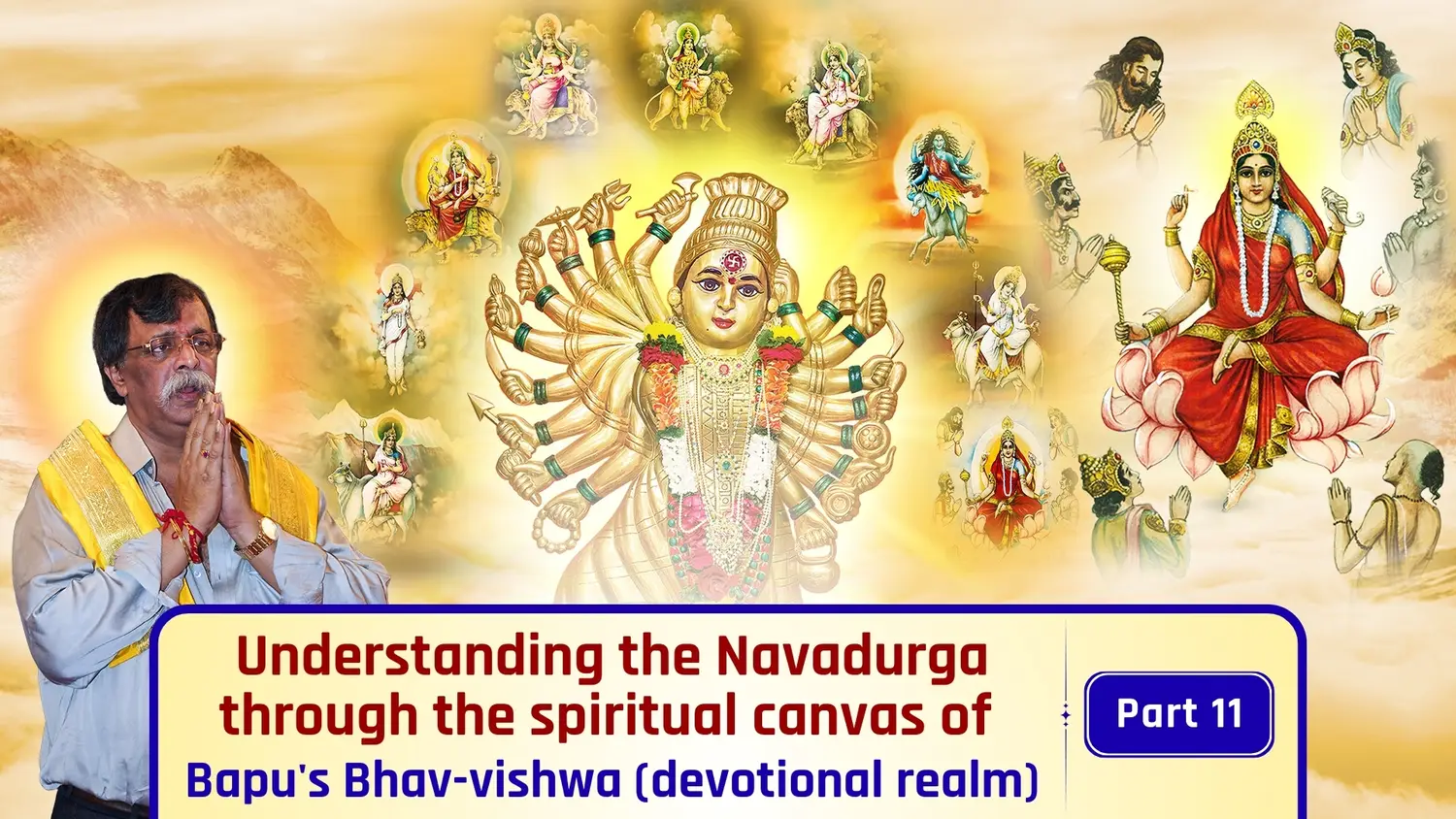
हिंदी मराठी ગુજરાતી বাংলা ಕನ್ನಡ മലയാളം தமிழ்
Reference: From the editorials numbered 1400 and 1401 in the Tulsipatra series of the daily ‘Pratyaksha’ by Sadguru Shree Aniruddha Bapu.
In Tulsipatra – 1400, Sadguru Shree Aniruddha Bapu writes:
Brahmavadini Lopamudra, together with all the Brahmarshis and Brahmavadini, offered salutations to the Adimata in her form as Shreevidya, and under Lopamudra’s lead they all sat for Dhyan (meditation) before the Adimata. Everyone else present watched them intently.
On the faces of the Brahmarshis and Brahmavadini, a deeply delightful, peaceful, and serene expression slowly appeared and continued to grow. Only Lopamudra’s face remained utterly still and quiet—neither especially pleased nor displeased. Seeing this, everyone present grew even more curious.
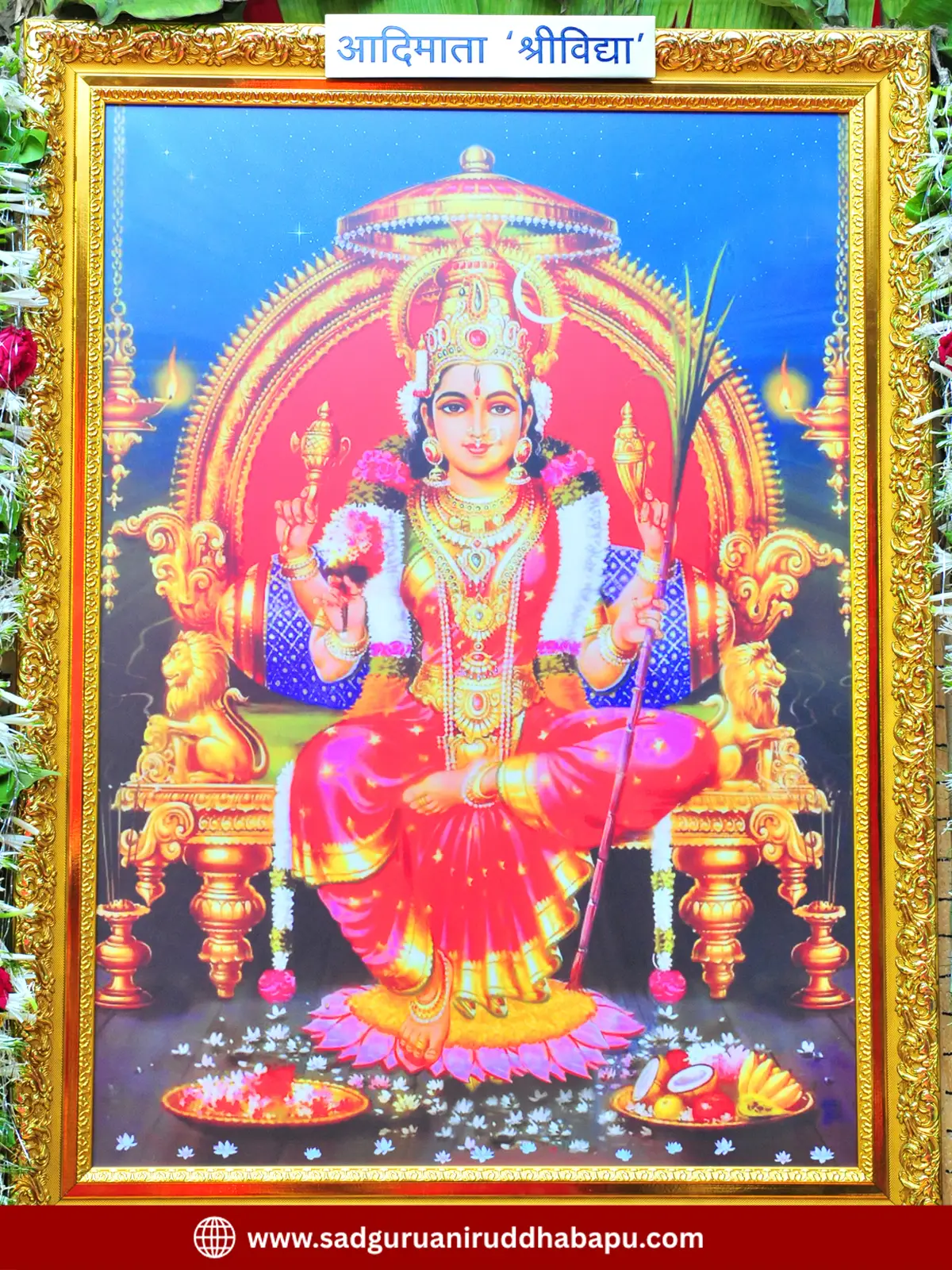
Bhagwan Trivikram then began chanting the mantra “Om Namashchandikayai” and placed his blessing hand upon Lopamudra’s head. At once, the same delightful, peace-filled radiance began to spread over Lopamudra’s face. Her lips parted and she too began chanting “Om Namashchandikayai.” At that moment, the other Brahmarshis and Brahmavadinis opened their eyes, but Lopamudra’s eyes were still closed. Even though she was chanting aloud, it was clear to everyone that she remained absorbed in ‘Dhyan’.
When Bhagwan Trivikram’s blessing hand lifted from her hair, Lopamudra rose from the Padmasana (lotus posture) and stood with her hands joined yet she was still immersed in ‘Dhyan’. Now her face showed only joy, as though many colors, many sources, many streams, and vast oceans of joy had all come to reside upon that one face.
Then the words of Bhagwan Trivikram reached every ear: “This is the state of Brahmananda. This is the true complete state and the course. Such Brahmananda is attained only after crossing the seventeenth and eighteenth step of the Shree Shambhavi Vidya. The other Brahmarshis and Brahmavadinis have also attained this Brahmananda. But the senior Brahmavadini Lopamudra has something further: because she spread the Bhakti of Adimata through countless Gunasankirtanas (singing praises and glories of Her attributes), and did so without the slightest thought of ‘I am doing this,’ she began, quite naturally, to offer even her Brahmananda at the lotus feet of the Adimata. That offered Brahmananda reached the original place from which the Mother had manifested—at the lotus feet of Shree Dattaguru. Thus, Lopamudra’s Brahmananda was accompanied with Satchidananda. Because of this, Lopamudra remains ever immersed in Brahmananda even while performing her every task. Only after passing all eighteen steps of the Shree Shambhavi Vidya does one attain this Satchidananda; and this attainment rests uniquely with Lopamudra. Therefore, she is the supreme guiding Guru of ‘the Shreevidya Samhita’, ‘the Shree Shambhavi Vidya’, ‘the Shree Shambhavi Mudra’, ‘the Shree Shambhavi Dhyana’, and ‘the Upasana of Satchidananda’.”
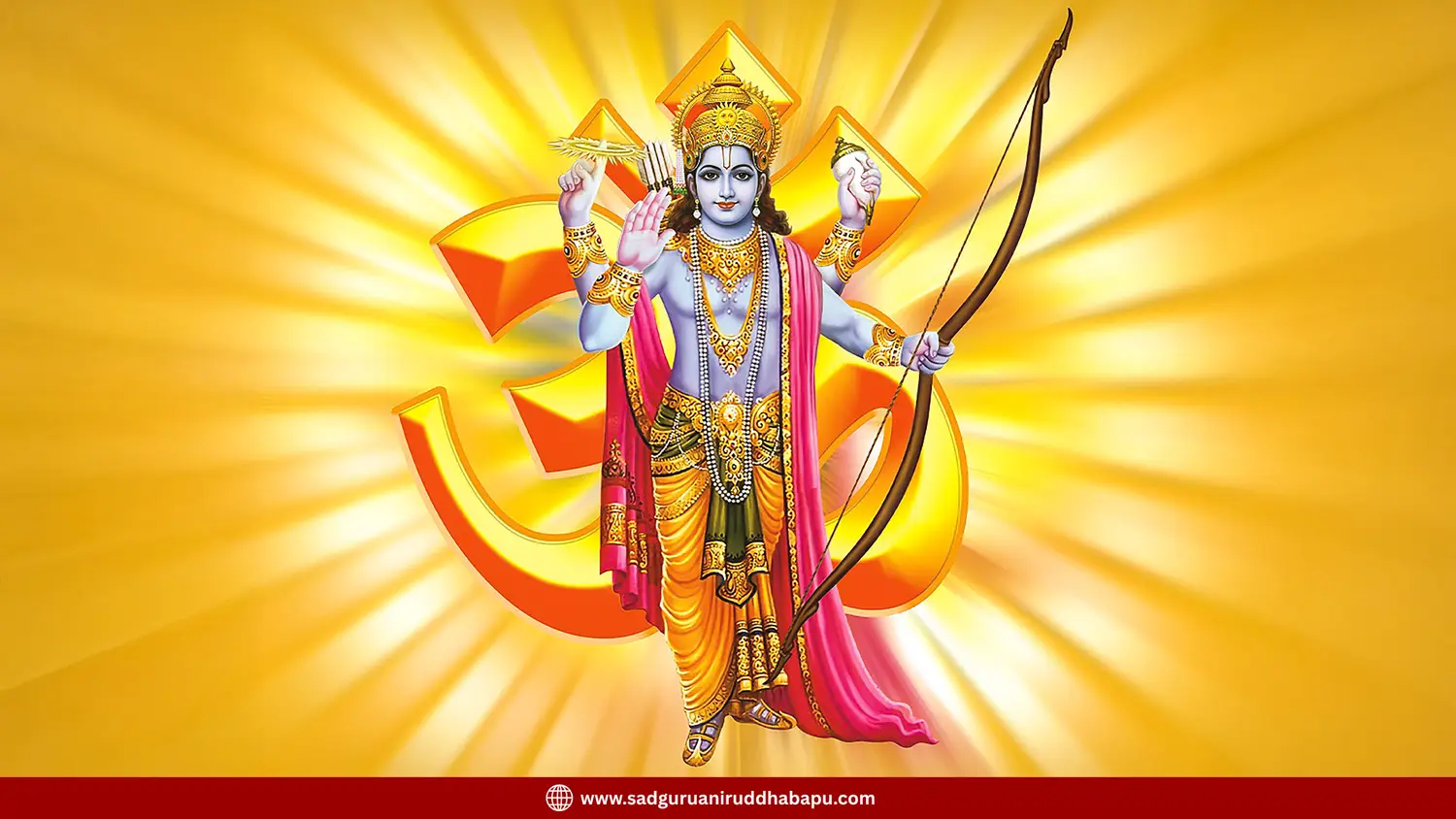
As soon as Bhagwan Trivikram said “Avadhuta Chintana…,” Lopamudra’s eyes opened while she herself completed the words “…Shree Gurudeva Datta.” When Bhagwan Trivikram permitted her to speak, the senior Brahmavadini began: “Dear ones, the presiding deity of the seventeenth and eighteenth stages of the Shree Shambhavi Vidya is the ninth Navadurga, Siddhidatri. She is the presiding deity of the day and night of the Navami of Navaratri. On the seventeenth stage of the Shree Shambhavi Vidya, Bhagwan Trivikram Himself teaches the seeker the Shree Shambhavi Dhyana and has him practice it. The Dhyana we all just now entered through which we were filled with Brahmananda was this very Shree Shambhavi Dhyana. At this seventeenth stage, Bhagwan Trivikram places the seeker’s hand into the hand of Siddhidatri. The Mother Siddhidatri then keeps that seeker near her, as her own child, for 1,008 human years—and only then does the Shree Shambhavi Dhyana reach its full completion. At the eighteenth stage, with Bhagwan Trivikram’s consent, Siddhidatri places the seeker’s hand back into the hand of Bhagwan Trivikram. Without any delay, Bhagwan Trivikram lifts the seeker in both arms as one would lift a child, transforms the seeker into an eight-year-old child, and takes him to the Adimata’s form dwelling in the Manidweep namely, to the throne-seated eighteen-armed Mahishasuramardini, to Lalitambika, to the original form of Shreevidya.
“In the Manidweep, that child remains forever, playing childlike games yet as a Brahmarshi and Brahmavadini. While abiding there as a child, these seekers also move about in their original forms upon the earth or upon other inhabited planets; they work there, and at times even take birth and accept death according to the circumstances of that place. But their birth and death have no significance for them. They remain forever in Brahmananda.”
After saying this, Brahmavadini Lopamudra offered fragrant flowers of many colors at the lotus feet of the Adimata Shreevidya. At once, the throne-seated form of the Mother as the Manidweepnivasini (the one who dwells in the Manidweep) shone forth. To the Mother’s left stood four Navadurgas from Pratipada to Chaturthi, and to her right stood four from Panchami to Ashtami. Holding a golden lotus parasol above the Mother’s head stood the ninth Navadurga, Siddhidatri. There was not the slightest difference between her face and the face of the Adimata.
In Tulsipatra – 1401, Sadguru Shree Aniruddha Bapu writes:
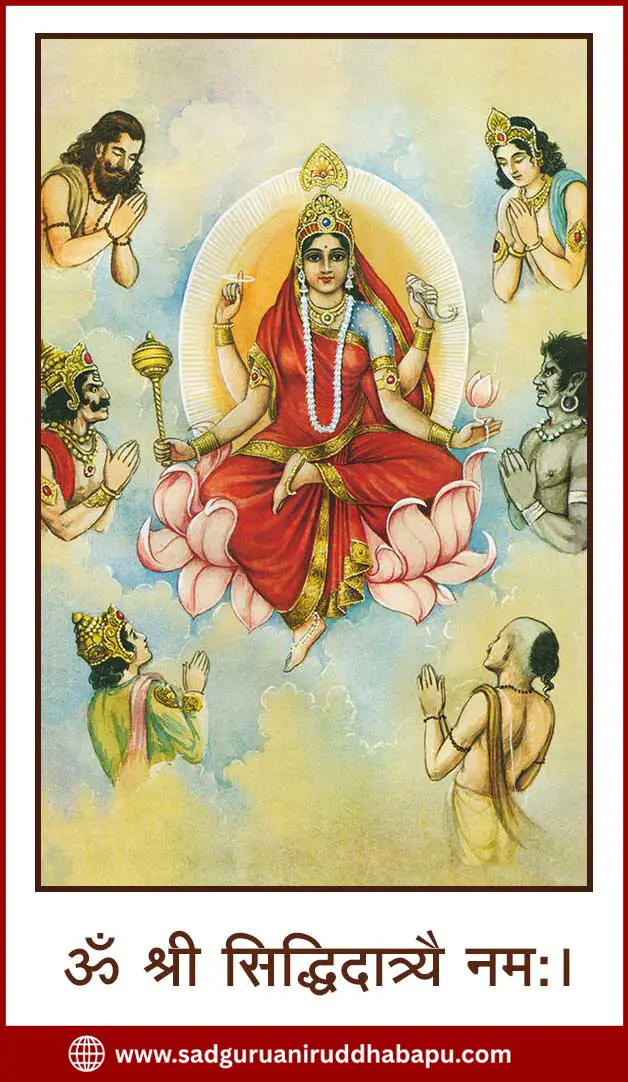
The ninth Navadurga, Siddhidatri, came before all present and stood without touching even the ground of Kailash with her feet. Her complexion was like the petals of a fresh rose. Her eyes were vast and penetrating, as though her gaze could pass through anything. She had four arms, and upon her forehead, instead of a third eye, there was a Kumkum tilak. Together, her four hands bore the conch, discus, mace, and lotus. Her garments were red with a golden border. Most striking of all, every one of her movements was extremely delicate, gentle, and soft. One single expression shone upon her face, contentment and that contentment moved of its own power from her face into the heart of every devotee.
At Bhagwan Trivikram’s gesture, Brahmavadini Lopamudra offered a garland of fragrant jasmine around the neck of Siddhidatri and offered flowers of champa and rose at her lotus feet. What happened next amazed everyone: each flower offered at Siddhidatri’s lotus feet came back and arranged itself around Lopamudra’s neck, forming a beautiful garland.
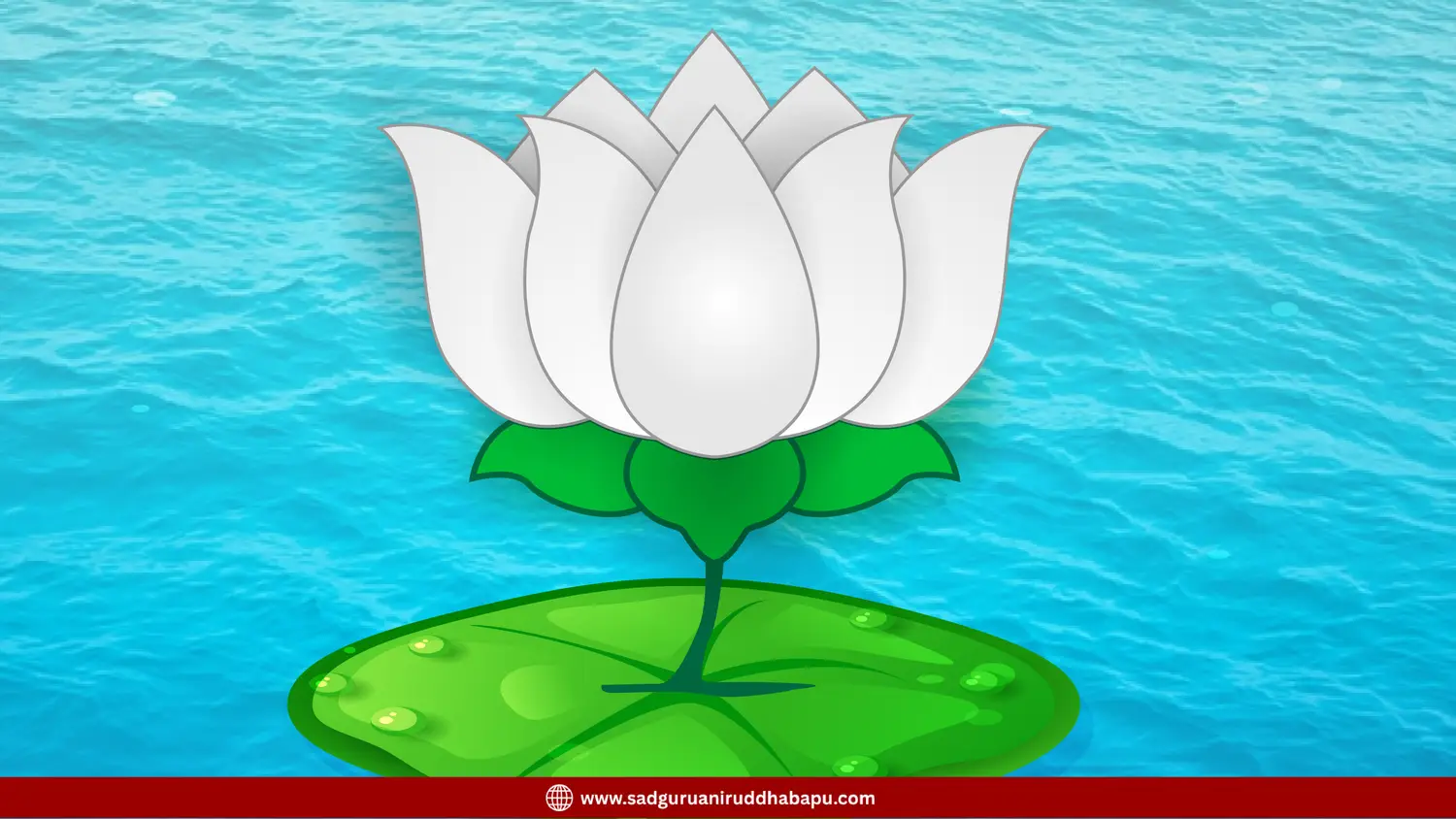
After offering all the flowers she had, and with the permission of the Adimata and Siddhidatri, Lopamudra addressed those present: “O fortunate ones, you truly are very fortunate, for you have witnessed in the perfect sequence all nine Navadurgas and have heard of their greatness. In this universe there are infinite siddhis—perfections or powers—such as anima, laghima, prapti, prakamya, mahima, ishitva, vashitva, sarvakama-avasahita, and sarvadnyatva. Among them, eight—like anima, laghima, mahima, and so on—are regarded as major Siddhis. On the earth, and on other earths as well, many perform austerities chiefly for the attainment of some siddhi. Whichever member of the Chandikakul an ascetic (tapasvi) worships as his beloved or adorable deity, he receives boons from that deity. If those boons take the form of siddhis, this ninth Navadurga, Siddhidatri, keeps her gaze upon the siddhi that the seeker is receiving. For it is from the aura of Siddhidatri alone that all types of siddhis arise, and from there that the true function of every siddhi proceeds throughout the universe.
“In truth, to chase after siddhis is wrong, for the power that comes with them if used by an intellect that is not just and not pure, quickly turns the seeker into a demon. Above all, a true devotee has no need to obtain any siddhi at all. When a sincere devotee worships the Adimata and the Navadurgas with heartfelt faith in both Navaratris, repeatedly recites the Adimata’s lifestory, and becomes absorbed in Her Gunasankirtan, then in his life every necessary function of siddhis is provided by the Mother Siddhidatri without even being asked.
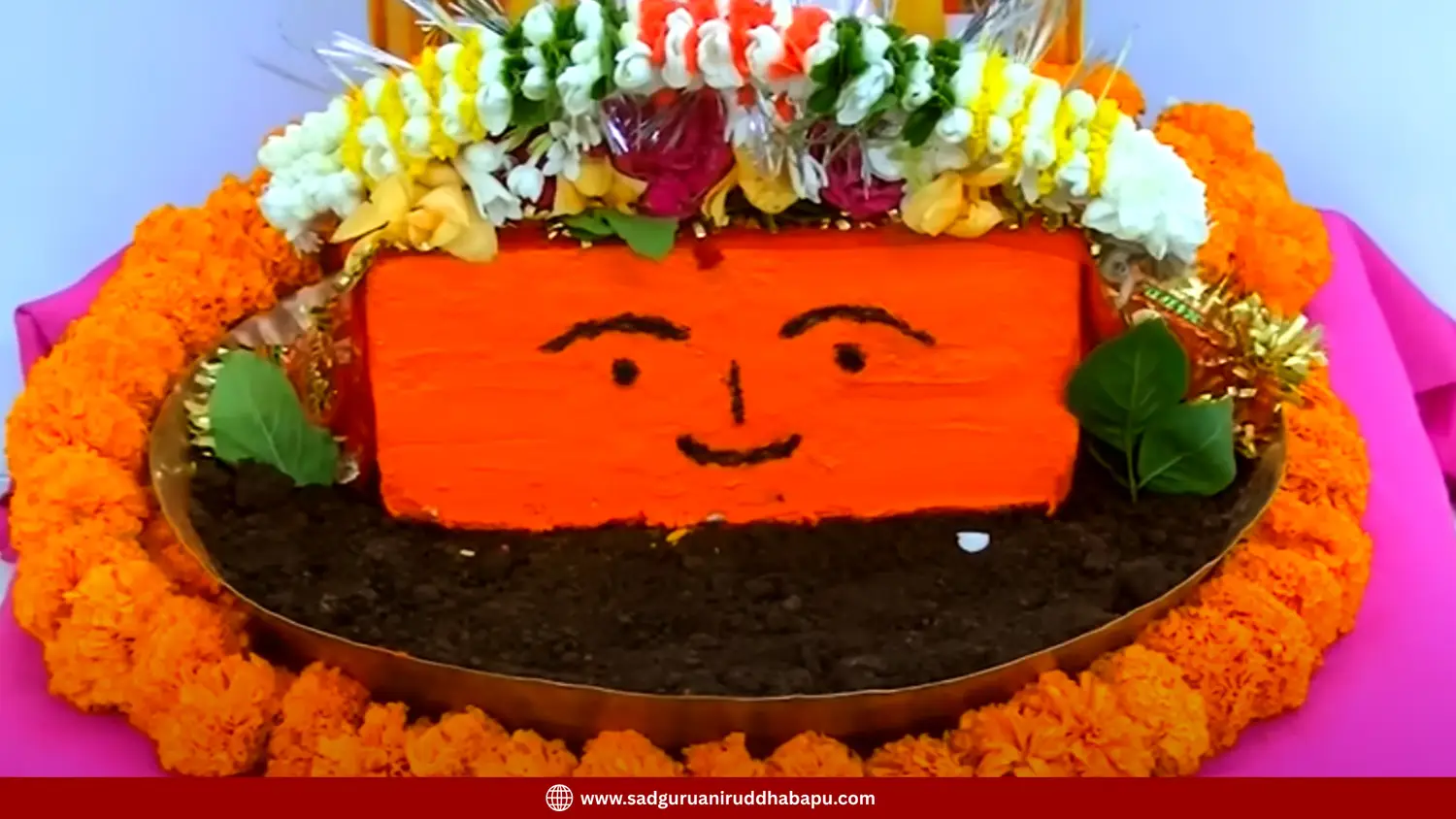
Not only that: for those who are devoted to all the sons and daughters of the Adimata within this Chandikakul, this Navadurga Siddhidatri certainly continues to accomplish, at the right time, the right work of siddhis. The contentment that ever shines upon her face assures every Shraddhavan that she accepts with satisfaction whatever is done with faith, and that she is pleased even with the smallest seva yet if what you desire are siddhis themselves, then you will not see that contentment upon her face. Every Brahmarshi and Brahmavadini possesses various siddhis, and the siddhis they need are available to them at any time.”
Here the senior Brahmavadini Lopamudra paused, and Bhagwan Trivikram began to speak: “My children, at the eighteenth stage of the Shree Shambhavi Vidya, these Brahmarshis and Brahmavadinis first receive one hundred and eight siddhis, and, according to their wish, all siddhis are available to them. But here lies the heart of the matter: unless one immediately offers all those attained siddhis at the feet of the Adimata and seeks freedom from them, one cannot become a Brahmarshi. When, at the eighteenth stage, all the siddhis received are offered at the Adimata’s feet, seeing this Nishkam bhav (selfless act), the Adimata entrusts the siddhis of that Brahmarshi or Brahmavadini to Siddhidatri. Siddhidatri then preserves each one’s siddhis within her own aura under that person’s name. Only then do the Adimata, Shree Dattatreya, and Siddhidatri grant that Brahmarshi or Brahmavadini the boon of being able to use even those siddhis that they do not personally possess merely by remembering Siddhidatri.”
Brahmavadini Lopamudra offered a silent salutation to Bhagwan Trivikram and said: “Dear ones, for those living in the world, this ninth Navadurga, Siddhidatri, stands ready to bring about their all-round flourishing. So long as a devotee does not cause suffering to another unjustly, whatever measure of happiness he rightfully seeks, this Navadurga Siddhidatri continues to provide. Most importantly, this Navadurga Siddhidatri and the Mother’s form as Siddheshwari, who reigns over all sciences are bound to one another in a mutual bond. After this ninth stage of her life, Parvati remains ceaselessly engaged in fivefold works—as Annapurna, Sadapurna, Bhavapurna, Prema-purna, and Shakti-purna so that every Shraddhavan may receive the Mother’s inherent nature of ‘forgiveness’. And she will always remain so.”
